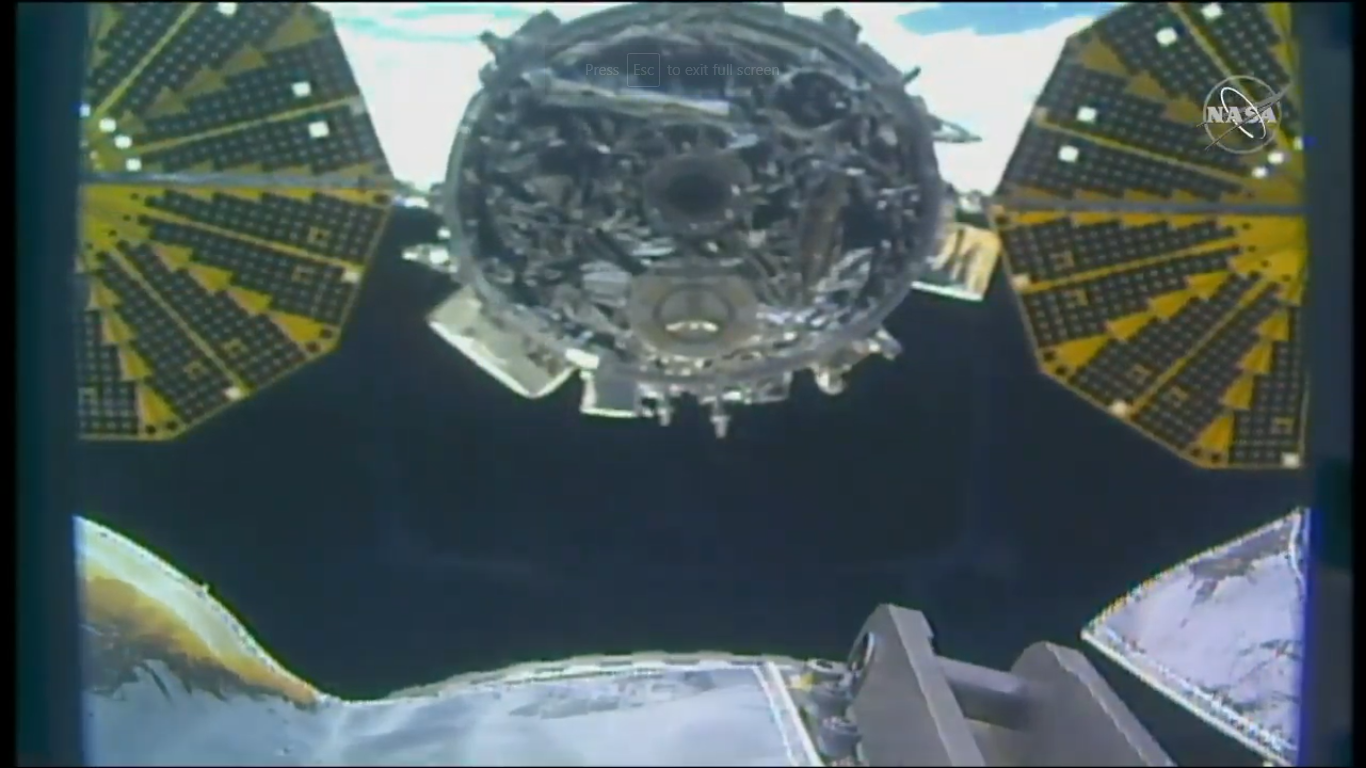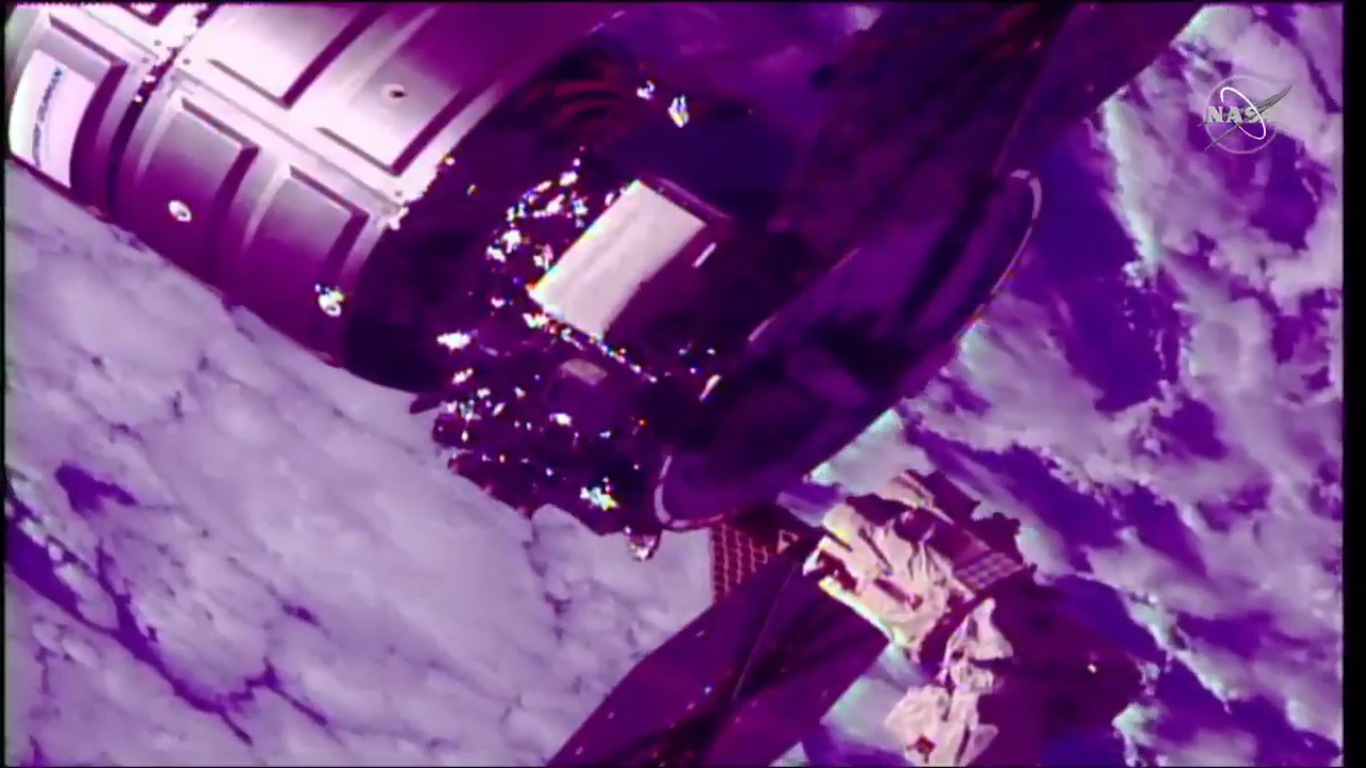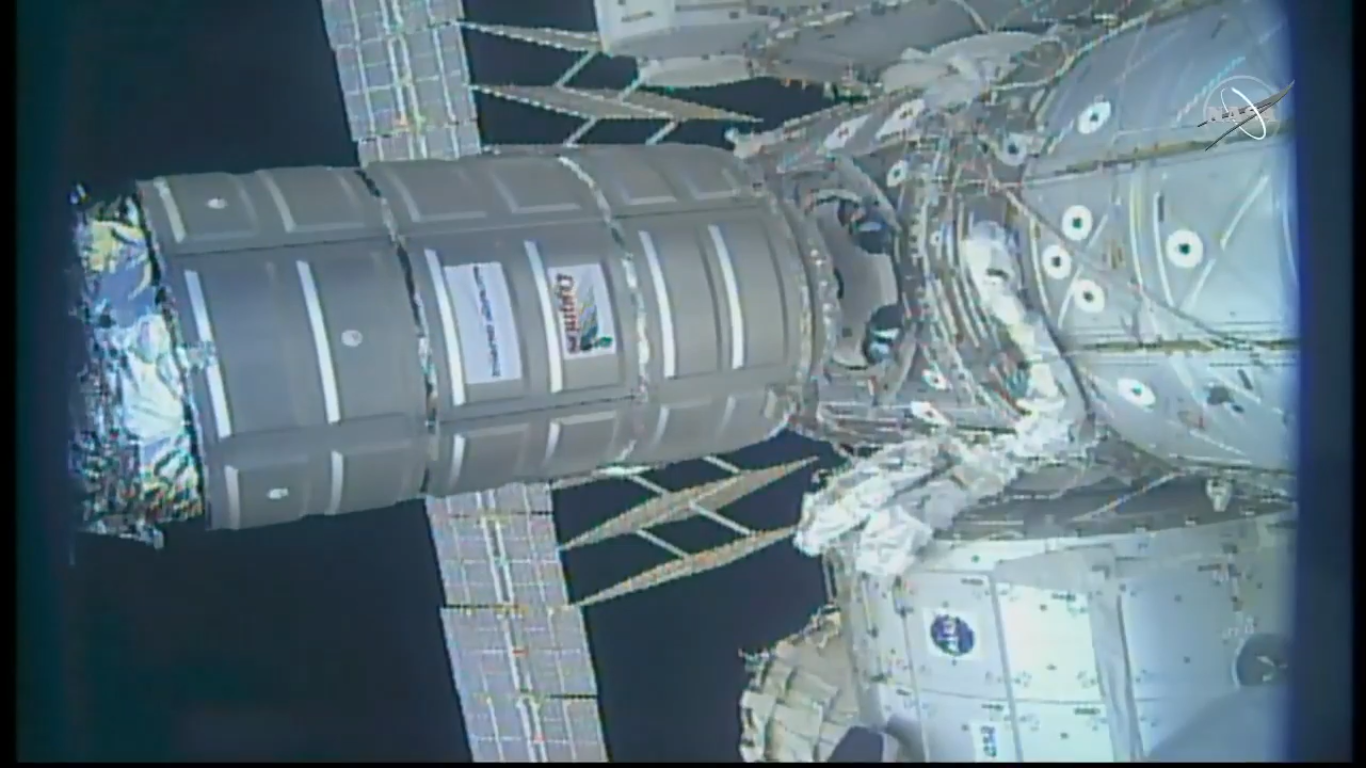Cygnus Spacecraft Departs Space Station, Begins New Mission in Orbit
The cargo vessel is taking an extended detour on its way back to Earth.
This afternoon (Aug. 6), over three months after it arrived in orbit, the Northrop Grumman Cygnus cargo spacecraft successfully undocked from the International Space Station and proceeded to drift off into the vacuum of space to begin the second part of its mission.
NASA astronauts Nick Hague and Christina Koch used the space station's Canadarm2 robotic arm to undock the spacecraft and send it on its way. The Cygnus separated from Canadarm2 at 12:15 p.m. EDT (1615 GMT).

Launched on April 17, 2019, the Cygnus CRS-11 cargo vessel docked with the space station on April 19. When it arrived, NASA astronaut Anne McClain and Canadian Space Agency astronaut David Saint-Jacques used the Canadarm2 to grapple the craft. The Cygnus, known as the S.S. Roger Chaffee, ferried 7,600 lbs (3,442 kg) of supplies, including science experiments and necessities for the crew, to the station.
Among the science equipment and scientific experiments sent to the station, two Astrobee robots were launched aboard Cygnus (and were joined by a third earlier this summer). Now, one of those little robots has started to fly and begin learning how to assist astronauts on board.
Related: Watch Live Tuesday: 2 Rocket Launches and a Cargo Ship Departure

Departure confirmed! @NorthropGrumman’s #Cygnus cargo spacecraft was released from the @Space_Station at 12:15pm ET as our orbiting laboratory was flying 260 miles over the Pacific Ocean. Watch: https://t.co/mzKW5uDsTi Ask questions using #askNASA pic.twitter.com/gTjfjUSsVmAugust 6, 2019
The undocking aired live on NASA TV. Ground controllers remotely unbolted Cygnus from its port on the station and moved it into a release position. Expedition 60 Flight Engineers Christina Koch and Nick Hague then used Canadarm2 to release the craft into space.
Typically Cygnus cargo vessels leave the International Space Station packed with trash, and they burn up in Earth's atmosphere as they fall from space. However, Cygnus will not just burn up this time (or float off into space) — this undocking will be the start of Cygnus's special secondary mission.
Get the Space.com Newsletter
Breaking space news, the latest updates on rocket launches, skywatching events and more!

After a 3-minute departure burn, Cygnus reached a safe distance away from the space station, it will start deploying small CubeSat satellites using two deployment systems by NanoRacks and SEOPS (Satellite, Extraterrestrial Operations and Procedures).
After about a month of free-flight, NASA’s Seeker Robotic External CubeSat Inspection Vehicle will deploy to move around Cygnus and take high-definition photos, which it will then transmit for storage in its receiver aboard Cygnus.
During this second part of the mission, Cygnus will also demonstrate a Control Moment Gyroscope attitude control system, which rotates the spacecraft and performs operations for the UbiquitiLink payload.
After completing the second part of its mission, Cygnus will burn up in Earth's atmosphere like its predecessors.
- Space Launch Calendar 2019: Sky Events, Missions & More
- SpaceX Delays Launch of Amos-17 Communications Satellite
- Cygnus Cargo Spaceship Makes Easter Delivery to Space Station
Follow Chelsea Gohd on Twitter @chelsea_gohd. Follow us on Twitter @Spacedotcom and on Facebook.
Join our Space Forums to keep talking space on the latest missions, night sky and more! And if you have a news tip, correction or comment, let us know at: community@space.com.

Chelsea “Foxanne” Gohd joined Space.com in 2018 and is now a Senior Writer, writing about everything from climate change to planetary science and human spaceflight in both articles and on-camera in videos. With a degree in Public Health and biological sciences, Chelsea has written and worked for institutions including the American Museum of Natural History, Scientific American, Discover Magazine Blog, Astronomy Magazine and Live Science. When not writing, editing or filming something space-y, Chelsea "Foxanne" Gohd is writing music and performing as Foxanne, even launching a song to space in 2021 with Inspiration4. You can follow her on Twitter @chelsea_gohd and @foxannemusic.









